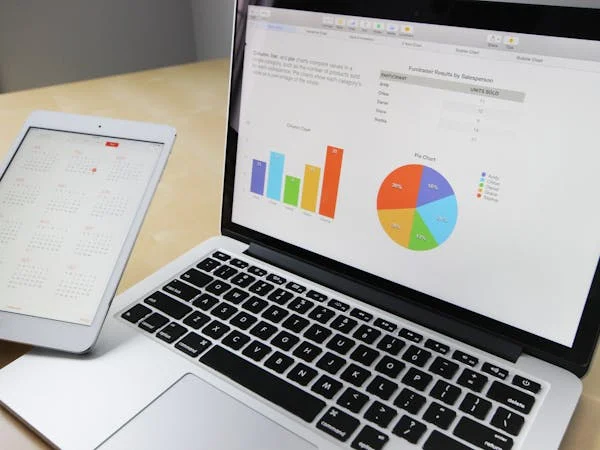In the evolving field of data management and systems optimization, it is essential to focus on load data. For organizations leveraging technology to enhance operational efficiency, insights from the HTC 310-225 RN load data can be a game-changer. The comprehensive analysis of such data can lead to identifying bottlenecks, optimization opportunities, and, ultimately, enhanced system performance.
In this guide, we will thoroughly examine HTC 310-225 RN load data, explore its importance, and equip you with practical ways to utilize it. This post will follow SEO best practices to ensure relevance and readability while delving into this complex yet pivotal topic.
What is HTC 310-225 RN Load Data?
HTC 310-225 RN load data represents system performance indicators captured within the infrastructure of various applications, hardware components, or networks. It includes a comprehensive set of metrics showing how effectively different systems run under different load conditions.
The load data is generally gathered over some time and provides valuable insights into aspects such as:
- Traffic Distribution: Identifies the flow of data through various system endpoints.
- System Resources: How CPU, memory, disk space, and network resources are consumed.
- Error Detection: Recognition of high-error rates or failing components under load conditions.
It is essential for organizations managing traffic or large databases to constantly monitor and analyze load data to prevent system slowdowns, downtime, or degraded performance.
Importance of Load Data in System Optimization
Understanding and working with load data is key to ensuring a responsive and efficient system. The HTC 310-225 RN load data assists businesses in the following areas:
Performance Monitoring
By monitoring load data, system administrators can identify performance-related issues quickly. Recognizing whether your system is underperforming due to excessive load helps to implement timely interventions and optimize response times.
Predictive Maintenance
Analyzing load data allows you to predict system failure based on historical performance data. By identifying patterns of resource exhaustion or irregular load peaks, businesses can preemptively address maintenance needs before they disrupt services.
Scalability Planning
Load data reveals the traffic and resource utilization patterns that an application or system is experiencing. Through this insight, scaling decisions can be made effectively. If data shows system utilization is hitting upper limits, plans can be made for scalability, such as adding more processing power or bandwidth.
Optimizing Resource Allocation
Memory, processing power, and storage resources must be allocated effectively in any system environment. Analysis of the load data allows for fine-tuning resource allocation, ensuring that the system operates at its best.
Standard Metrics in HTC 310-225 RN Load Data
The HTC 310-225 RN load data usually provides several critical metrics that allow administrators to analyze system performance. These key metrics include:
- CPU Utilization: This shows how much processing power the system consumes. It helps determine if there is any unnecessary processing overhead.
- Memory Usage: Indicates how much of the system’s memory is being used and whether there are memory leaks.
- Error Rates: Displays the error rates across the system, which can be related to factors such as overload or malfunction.
- Bandwidth: This metric tells the administrators the network traffic between endpoints. A high amount of traffic in a system could point toward an issue in bandwidth allocation.
- Response Time: It identifies how fast the system responds to requests and data retrieval, indicating whether there are any performance bottlenecks.
How to Use HTC 310-225 RN Load Data Effectively
To harness the full potential of HTC 310-225 RN load data, here are some key steps that can be followed:
Set Performance Benchmarks
Before analyzing HTC 310-225 RN load data, it’s vital to understand the baseline performance of your system or application. By setting benchmarks, administrators can easily spot deviations that indicate potential issues.
Create Real-Time Monitoring Dashboards
Tools like DataDog or Grafana can help visualize load data by providing real-time dashboards for tracking all critical performance metrics. Creating alerts for abnormal load levels will allow immediate attention to be given to emerging problems.
Analyze Historical Data for Patterns
Reviewing past load data over weeks, months, or even years can uncover patterns in your system’s performance. Periods of peak traffic, recurring error spikes, or recurring maintenance needs can be pinpointed for more efficient system management.
Address Bottlenecks Promptly
Based on insights gathered from load data, administrators can pinpoint bottlenecks such as overloaded CPUs, insufficient memory, or slow response times. These issues must be addressed promptly by allocating additional resources or optimizing code execution.
Conclusion
HTC 310-225 RN load data plays a pivotal role in ensuring the optimal performance of systems and applications. By regularly tracking and analyzing this data, businesses can improve scalability, predict and prevent issues, and enhance overall system efficiency. The right tools and strategies for interpreting this data can drastically reduce operational disruptions, optimize resource allocation, and ensure a seamless user experience.
Remember, the key to using HTC 310-225 RN effectively lies in monitoring, real-time analysis, and rapid response to emerging issues. These steps will ensure that your system performs at its best, regardless of load or traffic levels.
By maintaining this methodical and detailed approach to monitoring load data, organizations can avoid potential performance issues, ensuring smooth and uninterrupted service for their users.
Frequently Asked Questions (FAQs)
What is HTC 310-225 RN Load Data used for?
HTC 310-225 RN load data is used mainly for monitoring and optimizing the performance of systems, networks, and applications, helping prevent issues like system crashes, slowdowns, or errors under heavy usage.
How can I interpret high CPU utilization in the load data?
High CPU utilization usually indicates the system is under heavy load. If the utilization is consistently high, the system likely needs additional processing power to handle the traffic or resource consumption.
Can loading data help predict system failures?
Load data helps recognize trends and patterns that indicate a system is heading toward failure, allowing for preemptive actions like adjusting resources or optimizing the infrastructure.
What happens if the response time is high for load data?
A high response time may indicate the system is slow due to high traffic or insufficient resources. It could require optimization, such as load balancing or scaling.
What are some common bottlenecks revealed by load data?
Common bottlenecks revealed by load data include high CPU utilization, slow memory usage, low bandwidth, network congestion, or database query delays.
How do I set up performance benchmarks with load data?
You can set performance benchmarks by establishing baseline measurements for key metrics like CPU utilization, memory usage, and response times. These benchmarks can then serve as a reference for future performance analysis.
How can I optimize resource allocation based on load data?
Analyze trends in resource consumption and reallocate resources such as RAM or CPU power based on the areas that are underperforming or experiencing high demand during peak periods.
Is load data analysis only beneficial for large enterprises?
While larger enterprises usually benefit the most, load data analysis can also benefit small to medium enterprises by enhancing the stability and efficiency of their applications and networks.






